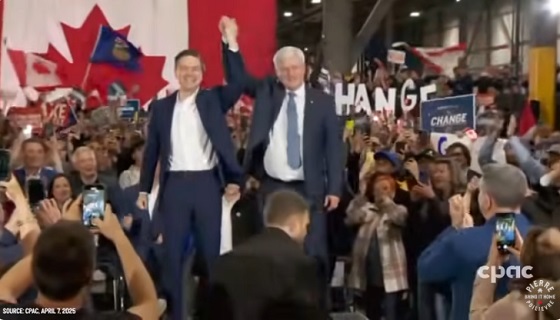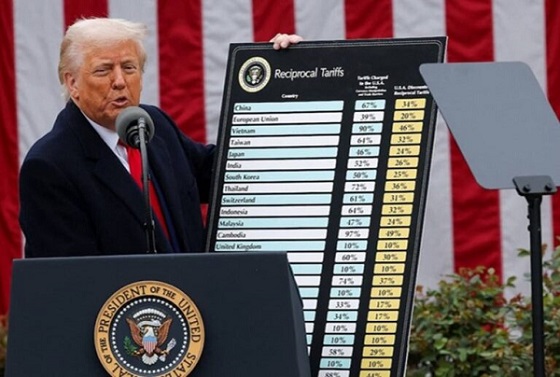Alberta
New mandatory province-wide measures to battle COVID will affect every business and family

From the Province of Alberta
New mandatory provincewide measures to protect lives
New mandatory health measures go into effect immediately to protect lives.
Expanded health measures will be in effect provincewide. All Albertans, businesses, organizations and service providers must follow all new health measures. These restrictions will be in place for a minimum of four weeks.
“Alberta has sought to protect both lives and livelihoods from the beginning of the pandemic. The recent surge in COVID-19 hospitalizations will threaten our health-care system and the lives of many vulnerable Albertans unless further action is taken now. With the promise of a vaccine early in 2021, we can see the end of this terrible time. But all Albertans must take this more seriously than ever by staying home whenever possible, and following these new measures.”
“Alberta’s case numbers and hospitalizations have reached a point where we must take stricter measures in order to protect capacity in our health system. These mandatory new health measures are some of the strictest we’ve implemented, but they are absolutely critical to the future of our province.”
“These mandatory measures will help us slow the spread of COVID-19. This will require individual sacrifices that are necessary to protect our province. It’s not just about one person, it’s about doing what we can to protect and save our loved ones, colleagues, neighbours, and even strangers. Following these public health measures is how we as Albertans care for and protect each other.”
New expanded mandatory measures come into effect Dec. 8 for social gatherings and mandatory masking. All others come into effect at 12:01 a.m., Dec. 13.
Social gatherings – immediate
- All indoor and outdoor social gatherings – public and private – are prohibited.
- Close contacts are limited to household members only.
- Individuals who live alone will be allowed up to two close contacts for in-person visiting, with those two people remaining the same for the duration of the restriction period.
- Festivals, parades, events, concerts, exhibitions, competitions, sport and performance remain prohibited.
Masking – immediate
- The mandatory indoor public masking requirement will be extended provincewide.
- Public spaces include locations where a business or entity operates and is applicable to employees, visitors and the general public.
- Applies to all indoor workplaces and facilities outside the home.
- Farm operations are excluded.
- Rental accommodations used solely for the purposes of a private residence are excluded.
Places of worship – starting at 12:01 a.m., Dec. 13
- All places of worship will be limited to 15 per cent of fire code occupancy for in-person attendance.
- Virtual or online services are strongly encouraged.
- Drive-in services where individuals do not leave their vehicles and adhere to guidance will be permissible and are not subject to capacity restrictions.
- Mandatory mask mandate, physical distancing and other guidelines remain in place.
Retail – starting at 12:01 a.m., Dec. 13
- Retail services must reduce customer capacity to 15 per cent of fire code occupancy, with a minimum of five customers permitted.
- Curbside pickup, delivery and online services are encouraged.
- Shopping malls will be limited to 15 per cent of fire code occupancy.
Closures – starting at 12:01 a.m., Dec. 13
- Restaurants, pubs, bars, lounges and cafes will be closed to in-person service.
- Only takeout, curbside pickup and delivery services are permitted.
- Casinos, bingo halls, gaming entertainment centres, racing entertainment centres, horse tracks, raceways, bowling alleys, pool halls, legions, and private clubs will be closed.
- Recreational facilities – fitness centres, recreation centres, pools, spas, gyms, studios, day and overnight camps, indoor rinks and arenas – will be closed.
- Outdoor recreation is permitted, but facilities with indoor spaces except for washrooms will be closed.
- Entertainment businesses and entities – libraries, science centres, interpretive centres, museums, galleries, amusement parks and water parks – will be closed.
- Hotels may remain open but must follow restrictions – no spas, pools or in-person dining. Room services only.
- Personal and wellness services, including hair salons, nail salons, massage, tattoos, and piercing, will be closed.
Health services, including physiotherapy or acupuncture, social or protective services, shelters for vulnerable persons, emergency services, child care, and not-for-profit community kitchens or charitable kitchens will remain open for in-person attendance.
Work from home – starting at 12:01 a.m., Dec. 13
- Mandatory work from home measures will be implemented unless the employer determines that work requires a physical presence for operational effectiveness.
Closures – ongoing from Nov. 27
- Entertainment businesses and entities – community halls and centres, indoor children’s play centres and indoor playgrounds, theatres, auditoriums, concert halls, and community theatres, nightclubs, banquet halls and conference centres, indoor and outdoor festivals, concerts with the exception of drive-in events, tradeshows, and sporting events or competitions, remain closed.
Alberta
Alberta takes big step towards shorter wait times and higher quality health care

From the Fraser Institute
On Monday, the Smith government announced that beginning next year it will change the way it funds surgeries in Alberta. This is a big step towards unlocking the ability of Alberta’s health-care system to provide more, better and faster services for the same or possibly fewer dollars.
To understand the significance of this change, you must understand the consequences of the current (and outdated) approach.
Currently, the Alberta government pays a lump sum of money to hospitals each year. Consequently, hospitals perceive patients as a drain on their budgets. From the hospital’s perspective, there’s little financial incentive to serve more patients, operate more efficiently and provide superior quality services.
Consider what would happen if your local grocery store received a giant bag of money each year to feed people. The number of items would quickly decline to whatever was most convenient for the store to provide. (Have a favourite cereal? Too bad.) Store hours would become less convenient for customers, alongside a general decline in overall service. This type of grocery store, like an Alberta hospital, is actually financially better off (that is, it saves money) if you go elsewhere.
The Smith government plans to flip this entire system on its head, to the benefit of patients and taxpayers. Instead of handing out bags of money each year to providers, the new system—known as “activity-based funding”—will pay health-care providers for each patient they treat, based on the patient’s particular condition and important factors that may add complexity or cost to their care.
This turns patients from a drain on budgets into a source of additional revenue. The result, as has been demonstrated in other universal health-care systems worldwide, is more services delivered using existing health-care infrastructure, lower wait times, improved quality of care, improved access to medical technologies, and less waste.
In other words, Albertans will receive far better value from their health-care system, which is currently among the most expensive in the world. And relief can’t come soon enough—for example, last year in Alberta the median wait time for orthopedic surgeries including hip and knee replacements was 66.8 weeks.
The naysayers argue this approach will undermine the province’s universal system and hurt patients. But by allowing a spectrum of providers to compete for the delivery of quality care, Alberta will follow the lead of other more successful universal health-care systems in countries such as Australia, Germany, the Netherlands and Switzerland and create greater accountability for hospitals and other health-care providers. Taxpayers will get a much better picture of what they’re paying for and how much they pay.
Again, Alberta is not exploring an untested policy. Almost every other developed country with universal health care uses some form of “activity-based funding” for hospital and surgical care. And remember, we already spend more on health care than our counterparts in nearly all of these countries yet endure longer wait times and poorer access to services generally, in part because of how we pay for surgical care.
While the devil is always in the details, and while it’s still possible for the Alberta government to get this wrong, Monday’s announcement is a big step in the right direction. A funding model that puts patients first will get Albertans more of the high-quality health care they already pay for in a timelier fashion. And provide to other provinces an example of bold health-care reform.
Alberta
Alberta’s embrace of activity-based funding is great news for patients

 From the Montreal Economic Institute
From the Montreal Economic Institute
Alberta’s move to fund acute care services through activity-based funding follows best practices internationally, points out an MEI researcher following an announcement made by Premier Danielle Smith earlier today.
“For too long, the way hospitals were funded in Alberta incentivized treating fewer patients, contributing to our long wait times,” explains Krystle Wittevrongel, director of research at the MEI. “International experience has shown that, with the proper funding models in place, health systems become more efficient to the benefit of patients.”
Currently, Alberta’s hospitals are financed under a system called “global budgeting.” This involves allocating a pre-set amount of funding to pay for a specific number of services based on previous years’ budgets.
Under the government’s newly proposed funding system, hospitals receive a fixed payment for each treatment delivered.
An Economic Note published by the MEI last year showed that Quebec’s gradual adoption of activity-based funding led to higher productivity and lower costs in the province’s health system.
Notably, the province observed that the per-procedure cost of MRIs fell by four per cent as the number of procedures performed increased by 22 per cent.
In the radiology and oncology sector, it observed productivity increases of 26 per cent while procedure costs decreased by seven per cent.
“Being able to perform more surgeries, at lower costs, and within shorter timelines is exactly what Alberta’s patients need, and Premier Smith understands that,” continued Mrs. Wittevrongel. “Today’s announcement is a good first step, and we look forward to seeing a successful roll-out once appropriate funding levels per procedure are set.”
The governments expects to roll-out this new funding model for select procedures starting in 2026.
* * *
The MEI is an independent public policy think tank with offices in Montreal, Ottawa, and Calgary. Through its publications, media appearances, and advisory services to policymakers, the MEI stimulates public policy debate and reforms based on sound economics and entrepreneurship.
-
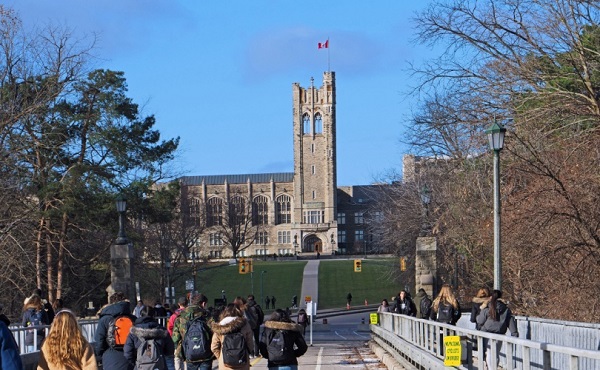
 2025 Federal Election1 day ago
2025 Federal Election1 day agoRCMP memo warns of Chinese interference on Canadian university campuses to affect election
-

 2025 Federal Election2 days ago
2025 Federal Election2 days agoConservative Party urges investigation into Carney plan to spend $1 billion on heat pumps
-

 Alberta2 days ago
Alberta2 days agoAlberta takes big step towards shorter wait times and higher quality health care
-

 2025 Federal Election2 days ago
2025 Federal Election2 days agoFifty Shades of Mark Carney
-
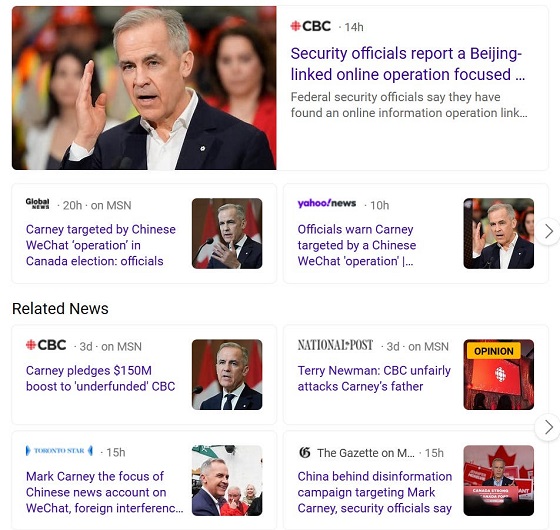
 2025 Federal Election2 days ago
2025 Federal Election2 days agoCorporate Media Isn’t Reporting on Foreign Interference—It’s Covering for It
-

 2025 Federal Election16 hours ago
2025 Federal Election16 hours agoResearchers Link China’s Intelligence and Elite Influence Arms to B.C. Government, Liberal Party, and Trudeau-Appointed Senator
-

 Business2 days ago
Business2 days agoTrump raises China tariffs to 125%, announces 90-day pause for countries who’ve reached out to negotiate
-
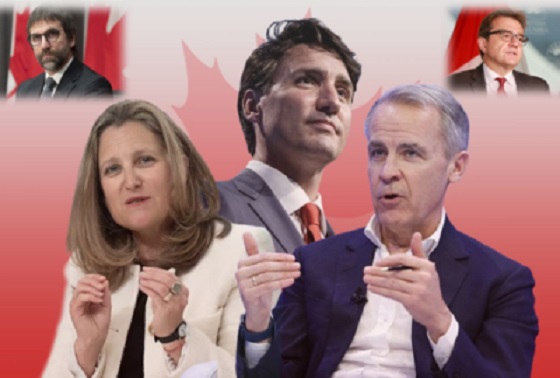
 2025 Federal Election1 day ago
2025 Federal Election1 day agoThe status quo in Canadian politics isn’t sustainable for national unity





